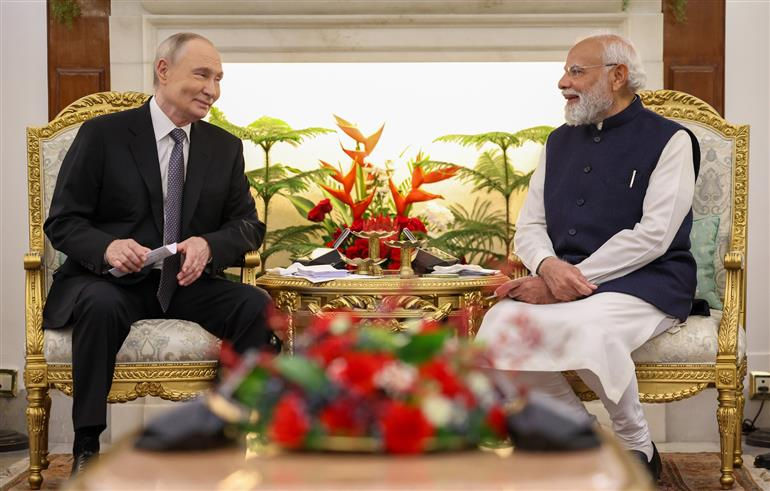Indian Army: Op Capable, Intelligence Blind
- rkbhonsle
- Jan 13, 2023
- 4 min read

General Manoj Pande, Chief of Army Staff of the Indian Army in his customary media briefing ahead of the 75th Army Day outlined the significant challenge faced by the world’s second largest army that of assessing the enemy intent on the other side of the hill.
Thus, referring to the Northern borders with China, the Army Chief General Pande said, “In the northern borders the situation is stable and under control yet unpredictable. You are aware of the ongoing talks (both at military as well as diplomatic levels) wherein we’ve been able to resolve five out of seven issues that were there on the table.”
Clearly this was an admission of the military being blind on the intelligence front which is a failing that is not new to the Indian armed forces and is frequently made up by the blood and toil of soldiers on the ground and junior officers who demonstrate commitment and vigour to notch up many operational successes.
The saga of the Indian Army’s intelligence failures is long starting with the Pakistan Army supported raiders surreptitiously entering Kashmir in 1947 reaching the gates of Srinagar near Badgam when these were beaten back towards Muzaffarabad.
The momentous failure of 1962 War against China is shrouded in the mystery of the Henderson Brooks Report which has never been officially released yet excerpts from the same have been quoted from time to time.
In 1971, the success of Liberation War in Bangladesh may have been different had General later Field Marshal SHFJ Manekshaw not insisted on launching operations at a time of his choosing despite significant pressures from then Prime Minister Ms Indira Gandhi.
Thereafter from Kargil in 1999 to the large scale terrorist attacks in Uri and Pulwama military intelligence failures have continued which have been made up by unleashing operational capability be it Operation Vijay in 1999 to so called, “surgical strikes,” in 2016.
The story has been familiar in recent years with the Army failing to anticipate China’s intrusions across selected points on the Line of Actual Control. But for the saga of the Galwan incident of 15 June 2020 when skirmishing Indian Army and People’s Liberation Army (PLA) clashed with casualties to both sides, these intrusions may not have gathered national attention.
However, by establishing a post on the high Kailash Range in the summer of 2020, the military partially made up for the losses. The Yangtse incident on December 09 this year is an indicator that lessons are being learnt fast and the military is now anticipating possible actions by the PLA.
Yet the surge of attacks in Rajauri sector in Jammu and Kashmir in January 2023 brings to light concerns that the rise in awareness of adversary intention remains a question mark. The killing of four soldiers in August 2022 should have been warning enough of infiltration of groups in this sector but the military perhaps believed that the counter infiltration grid was impermeable.
The Statement by the Army Chief that the situation on the Line of Actual Control (LAC) was “uncertain,” is another marker of the intelligence dilemma faced by the Army.
By making huge investments in drones and UAVs as reports indicate apart from other resources the Indian Army Forces hope to make up for the deficit.
However, this is not likely to lead to removal of, “uncertainty,” vis a vis China or Pakistan.
Understanding the Long Game
Developing intelligence of enemy, “Intent,” is a complex process the principal feature of
which is understanding the Long Game of the adversary.
China’s aggressive proclamations of regaining territorial sovereignty was evidently ignored at the national as well as military level, with belief in diplomacy at the high table.
While China has abandoned the agreements for peace and tranquility on the LAC made during a period when there was obviously a need felt in Beijing for keeping the ghosts of the past under cover, the present regime under President and Chairman of the Central Military Commission Xi Jinping is no longer shackled by constraints of the past and is unwilling to, “bide the time and never take the initiative,” sayings of the Deng era.
Galwan is thus a symptom of the disease of a blinkers down approach, and here the Army alone cannot be faulted.
But where the blame directly rests on the military is in discontinuing vigil on the LAC which was the express charge of the Army and prevent intrusions regardless of ongoing diplomacy.
Why the commanders in the field were complacent will never be clear, yet the Army seems to have learnt the lessons well if Yangtse is any example.
Understanding China and Pakistan’s Long Game is therefore important, what that is will be a
subject of another discussion.
Character of Wars and Insurgencies Transforms
Yet another indicator of knowing the Intent of the enemy is to track the way he will fight in the light of his Long Game.
It is an oft known maxim that while nature of war is constant the character of wars and insurgencies changes based on application of violence by an adversary.
The next war will be different from the previous one and an agile aggressor as Pakistan will continue to strive to change the pattern of terrorism in J & K catching the security forces off guard.
For crystal gazing, investing in mastering the many techniques of futures assumes importance.



Comments